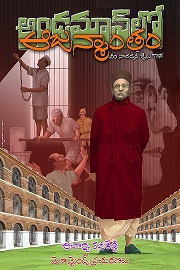జ్ఞాన్ వాపి మసీదు భారతదేశంలోని ఉత్తర ప్రదేశ్ లోని వారణాసిలో ఉంది. మొఘల్ చక్రవర్తి ఔ రంగజేబ్ ఈ స్థలంలో అసలు కాశీ విశ్వనాథ్ ఆ...
జ్ఞాన్ వాపి మసీదు భారతదేశంలోని ఉత్తర ప్రదేశ్ లోని వారణాసిలో ఉంది. మొఘల్ చక్రవర్తి ఔరంగజేబ్ ఈ స్థలంలో అసలు కాశీ విశ్వనాథ్ ఆలయాన్ని కూల్చివేసిన తరువాత దీనిని నిర్మించాడు. మసీదులో కలిపిన పాత హిందూ ఆలయ గోడను స్పష్టంగా గమనించవచ్చు. ఈ ఆలయంలో జ్ఞాన వాపి అనే చిన్న బావి కూడా ఉంది, దీనిని జ్ఞాన్ వాపి (జ్ఞానం బావి) అని కూడా పిలుస్తారు. జ్ఞాన వాపి బావి ప్రధాన ఆలయానికి ఉత్తరాన ఉంది మరియు ఆక్రమణ సమయంలో రక్షించడానికి జ్యోతిర్లింగం బావిలో పడేశారని అంటారు.
ఆలయ ప్రధాన పూజారి ఆక్రమణదారుల నుండి రక్షించడానికి శివలింగంతో బావిలో దూకినట్లు చెబుతారు. ఈ మసీదును 1669 లో ఔరంగజేబ్ నిర్మించారు, ఈ ప్రదేశంలో ఉన్న కాశీ విశ్వనాథ్ ఆలయాన్ని ధ్వంసం చేసిన తరువాత. ఈ మసీదుకు ఆలయం మరియు మసీదు మధ్య ఉన్న జ్ఞాన్వాపి (“జ్ఞానం యొక్క బావి”) పేరు పెట్టబడింది.
కాశీ విశ్వనాథ్ ఆలయం అనేక వేల సంవత్సరాల నుండి ఉనికిలో ఉంది మరియు కొన్ని వందల సంవత్సరాల క్రితం పునర్నిర్మించబడింది. మసీదు నిర్మాణానికి ముందు ఉన్న ఆలయ నిర్మాణం రాజా మన్ సింగ్ చేత అక్బర్ పాలనలో నిర్మించబడింది. మరాఠా పాలకుడు మల్హర్ రావు హోల్కర్ (1693-1766) మసీదును కూల్చివేసి, ఈ స్థలంలో విశ్వేశ్వర్ ఆలయాన్ని పునర్నిర్మించాలని కోరారు. అయినప్పటికీ, అతను ఎప్పుడూ అలా చేయలేదు. తరువాత, 1780 లో, అహిల్యబాయి హోల్కర్ మసీదు ప్రక్కనే ఉన్న ప్రస్తుత కాశీ విశ్వనాథ్ ఆలయాన్ని నిర్మించారు.
ఈ ఆలయాన్ని గుజరాతీ వ్యాపారి షంసుద్దీన్ ఇల్తుమిష్ (క్రీ.శ.1211-1266) పాలనలో పునర్నిర్మించారు. హుస్సేన్ షా షార్కి (1447-1458) లేదా సికందర్ లోధి (1489-1517) పాలనలో దీనిని మళ్ళీ పడగొట్టారు. రాజా మన్ సింగ్ అక్బర్ పాలనలో ఈ ఆలయాన్ని నిర్మించాడు, కాని మొఘల్ చక్రవర్తులను తన కుటుంబంలోనే వివాహం చేసుకోవడానికి హిందువులు దీనిని బహిష్కరించారు. రాజా తోడర్ మాల్ 1585 లో అక్బర్ నిధులతో ఆలయాన్ని తిరిగి నిర్మించాడు.
ఔరంగజేబ్ అసలు ఆలయాన్ని కూల్చివేసి, దానిపై ఒక మసీదును నిర్మించిన తరువాత కూడా, పూర్వపు ఆలయం యొక్క అవశేషాలు పునాది, స్తంభాలు మరియు మసీదు వెనుక భాగంలో చూడవచ్చు. 1833-1840 CE లో, జ్ఞాన్వాపి బావి యొక్క సరిహద్దు, ఘాట్లు మరియు సమీపంలోని ఇతర దేవాలయాలు నిర్మించబడ్డాయి.
“The Lord Cherisher of the Faith learnt that in the provinces of Thatta, Multan and especially at Benaras, the Brahman misbelievers used to teach their false books in their established schools, and their admirers and students, both Hindu and Muslim, used to come from great distances to these misguided men in order to acquire their vile learning. His Majesty, eager to establish Islam, issued orders to the governors of all the provinces to demolish the schools and temples of the infidels, and, with the utmost urgency, put down the teaching and the public practice of the religion of these unbelievers” - ఇది మహా ఘనత వహించిన ఔరంగజేబ్ స్వయాన జారీ చేసిన హుకుం!
“according to the Emperor’s command, his officers had demolished the temple of Viswanath at Kashi”. (Maasiri-‘ Alamgiri, 88) అనేది కూడా అధికారికమైన మొఘల్ రికార్డుల నుంచి సేకరించిన సమాచారమే,అయినప్పటికీ ఔరంగజేబుని ఆలయ ప్రేమికుడిగా గోసంరక్షకుడిగా మనముందు నిలబెట్టడానికి రాం పునియాని, B.N.Pande వంటివారు ఎంతో శ్రమకోర్చి పరిశోధనలు చేసి ఎన్నో ఉద్గ్రంధాలను జనం మీదకి వదుల్తున్నారు.వీళ్ళ నీచత్వాన్ని చూసి వీదేశీయులైన Koenraad Elst వంటివాళ్ళే నిశ్చేష్టులౌతున్నారు - బహుశా, ఇలాంటివాళ్ళు తమ జాతిలో పుట్టనందుకు గర్విస్తూ ఉండి ఉండవచ్చు కూడా!
దారా షికోఒక ఆలయానికి కానుక ఇస్తేనే సహించలేని ఔరంగజేబు యొక్క స్వగతం ఇది: “In the religion of the Musalmans it is improper even to look at a temple” and therefore, presentation of a stone railing to Keshava Rai temple by Dara was “totally unbecoming of a Musalman”. చావటానికి రెండేళ్ళ ముందు, అంటే 1705 జనవరి 1న ఔరంగజేబు నుంచి వెలువడిన “demolish the temple of Pandharpur and to take the butchers of the camp there and slaughter cows in the temple … It was done”. Akhbarat, 49-7, cited in J.N. Sarkar, Aurangzeb, Vol.III, 189) అనే ఆజ్ఞాపత్రం ఏమి చెబుతుంది మనకి?
కాశీ విశ్వనాధ ఆలయ ధ్వంసానికి మూలకారణం అని వీళ్ళు ప్రచారం చేసిన పిట్టకధ వింటే అసహ్యంతో ఒళ్ళు జలదరిస్తుంది - while Aurangzeb was passing near Varanasi on his way to Bengal, the Hindu Rajas in his retinue requested that if the halt was made for a day, their Ranis may go to Varanasi, have a dip in the Ganges and pay their homage to Lord Vishwanath. Aurangzeb readily agreed. The Ranis made a journey on the Palkis. They took their dip in the Ganges and went to the Jagganath temple to pay their homage. After offering Puja all the Ranis returned except one, the Maharani of Kutch.
“A thorough search was made of the temple precincts but the Rani was to be found nowhere. When Aurangzeb came to know of it, he was very much enraged. He sent his senior officers to search for the Rani. To their horror, they found the missing Rani dishonoured and crying, deprived of all her ornaments. The basement was just beneath Lord Jagannath’s seat. The Rajas expressed their vociferous protests. As the crime was heinous, the Rajas demanded exemplary action. Aurangzeb ordered that as the sacred precincts have been despoiled, Lord Vishvanath may be moved to some other place, the temple be razed to the ground and the Mahant be arrested and punished. అబద్ధం చెప్పినా అతికినట్టు ఉండాలంటారు పెద్దలు - ఈ కధని అల్లినవాడికి అసలు కామన్ సెన్స్ అనేది ఉందా అని అనుమానం రావటం లేదూ!
మనం చిన్నప్పుడు చరిత్ర పుస్తకంలో ఇదే చదివి ఉంటాం కదూ! మనం ప్రత్యేకించి దీని నిజానిజాలని గురించి బుర్రలు బద్దలు కొట్టుకోవాల్సిన పని లేదు, Koenrad Elst వీళ్ళందరికీ ఎప్పుడో గడ్డి పెట్టేశాడు The story is very bizarre, to say the least. First of all, it has Aurangzeb go to Bengal. There are fairly complete chronicles of his doings, day by day; could B.N. Pande or any of his quoters give the date or even the year of this remarkable episode?Neither was Aurangzeb known to surround himself with Hindu courtiers. And did these Rajas take their wives along on military expeditions? Or was it some holiday picnic? How could the Mahant kidnap a Rani who was there in the company of other Ranis, as well as the appropriate courtiers and bodyguards? Why did he take such risk? Why did the “Rajas” wait for Aurangzeb to take “exemplary action”: did they fear his anger if they punished the priests or destroyed the temple themselves? And since when is demolition the approved method of purifying a defiled temple, an eventuality for which the Shastras have laid down due ritual procedures? అని!
Koenraad Elst అనే పెద్దమనిషి సాక్షాత్తూ మొఘల్ రికార్డుల నుంచి తీసుకుని ఇది తప్పని నిరూపించాడు గాబట్టి నోరు మూసుకున్నారు. మరి ఈ చరిత్రని మనకి చెప్పిన ఎమినెంట్ హిస్టోరియన్స్ ఏ డాక్యుమెంటరీ ఎవిడెన్స్ పక్కన పెట్టుకుని ఆనాడు జరిగిన కధని కళ్ళకి కట్టినట్టు చెప్పగలిగారు? అవును, ఇవన్నీ నమ్మితేనే మనం సెక్యులర్ హిందువులం, లేకపోతే హిందూ మతతత్వ వాదులం. హరిబాబు సూరనేని.
ఇలాంటి వ్యాసాల కోసం ఈ క్రింద ఉన్న వాట్సాప్ గ్రూప్ లో జాయిన అవ్వగలరు. మీ MegaMindsIndia.
ఇలాంటి వ్యాసాల కోసం ఈ క్రింద ఉన్న వాట్సాప్ గ్రూప్ లో జాయిన అవ్వగలరు. మీ MegaMindsIndia.











No comments